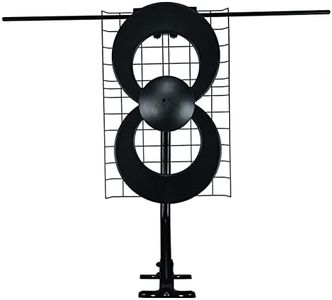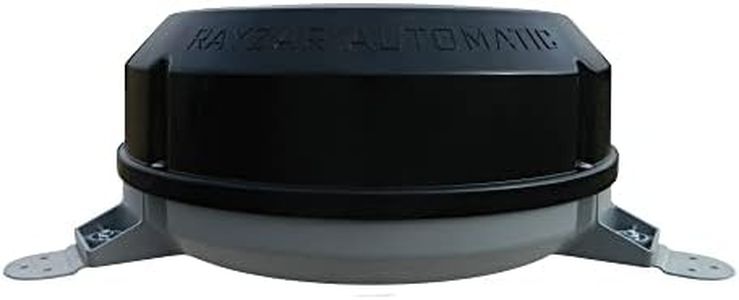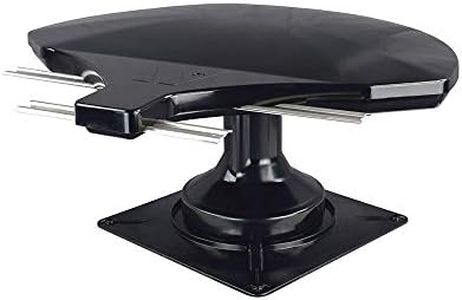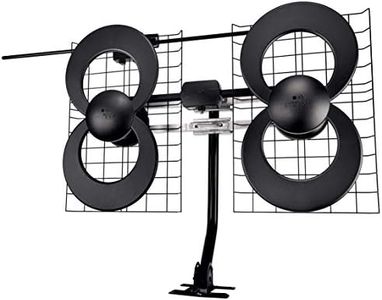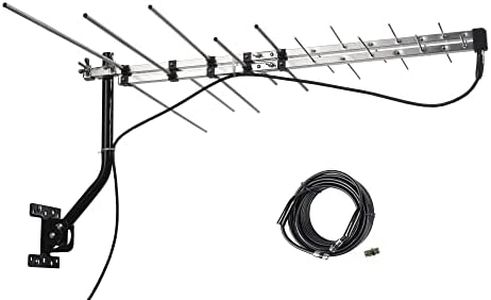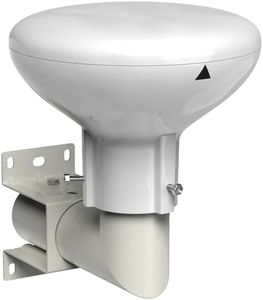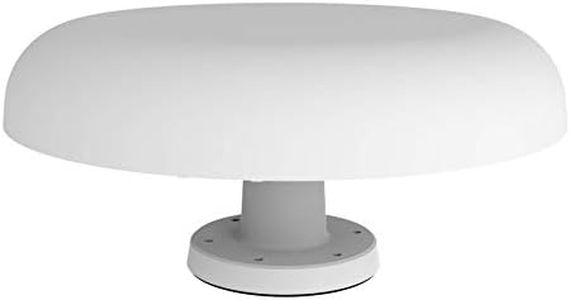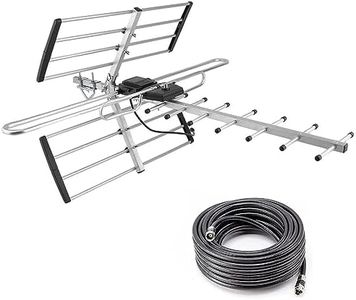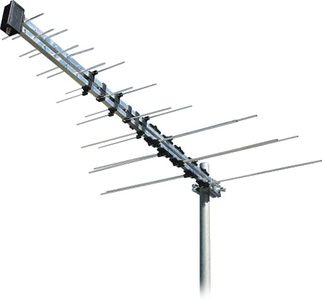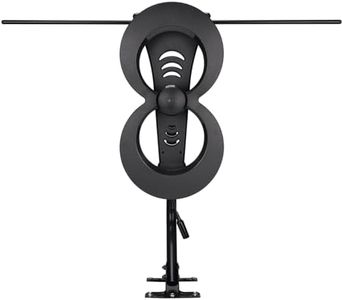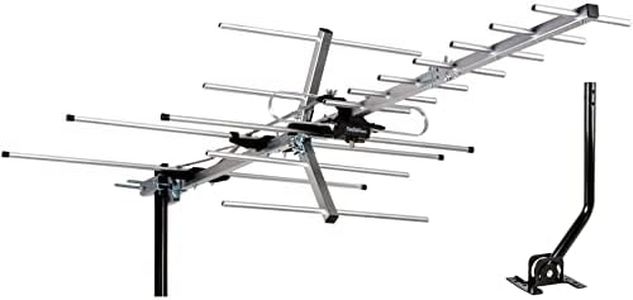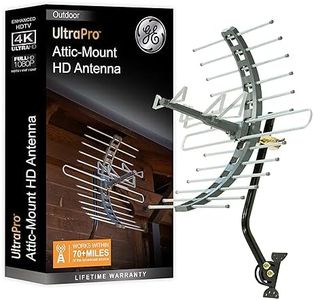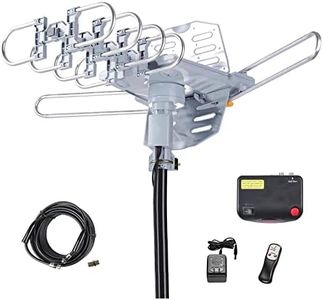We Use CookiesWe use cookies to enhance the security, performance,
functionality and for analytical and promotional activities. By continuing to browse this site you
are agreeing to our privacy policy
10 Best Outdoor TV Antennas
From leading brands and best sellers available on the web.Buying Guide for the Best Outdoor TV Antennas
Choosing the right outdoor TV antenna can help you access more channels with better clarity, especially if you live in an area where indoor antennas aren't powerful enough. The best approach is to consider where you live, how far you are from broadcast towers, what kind of reception you want, and the installation options you have. Understanding the key features of outdoor TV antennas will make it easier to pick the best one for your location and needs.RangeRange in outdoor TV antennas means how far the antenna can pick up signals from broadcast towers. It's generally listed in miles and tells you the maximum distance at which the antenna can work effectively. If you're close to broadcast towers in a city area, a lower range antenna (up to 30 miles) is usually enough. For suburban or rural areas where towers might be further away, you’ll want a higher range, sometimes advertised as 60 miles or more. To decide, check an online signal locator for your address and pick an antenna that covers at least a bit beyond the distance to your furthest desired station. Overestimating a little can help ensure consistent signal, but bigger ranges won’t add extra channels if the signals aren’t there.
Directional vs. OmnidirectionalAntennas come as directional (also called Yagi) or omnidirectional. Directional antennas point toward a single direction and are best if signals in your area come mostly from one direction—they focus reception for stronger signals but need to be aimed precisely. Omnidirectional antennas collect signals from all around, which is useful if channels are broadcast from multiple locations, but they may be a bit less powerful with distant or weak signals. To choose, find out if your main stations are grouped in one direction or scattered, and pick accordingly. Directional for clustered signals, omnidirectional for scattered.
Antenna Size and DesignOutdoor antennas come in different sizes and shapes, from compact models to large, multi-element structures. Bigger antennas often have higher gain and can capture weaker signals, which is helpful in rural areas, but they are more noticeable and can be harder to mount. On the other hand, compact models are easier to install and look less intrusive, well-suited for places with strong signals. Think about your installation area, weather exposure, neighborhood rules, and how much attention the antenna will attract when choosing the design.
VHF/UHF ReceptionTV broadcasts come in two frequency bands: VHF and UHF. Some antennas only do well on UHF, but many communities still broadcast important channels on VHF. Having an antenna that supports both VHF and UHF increases your chance of receiving all local channels. To choose, check which channels you want and their frequencies using a signal map. If there's a mix, look for a dual-band antenna; if all your favorites are UHF, you might get by with a UHF-only model.
AmplificationAmplified antennas use a powered booster to make weak signals stronger, which can be helpful for areas far from towers or where many obstacles could weaken the signal. However, too much amplification, especially if you're near towers, can actually cause distortion. If you’re in a fringe area or have a long cable run to your TV, an amplified antenna may be useful. But if your signal is already strong, choose a non-amplified (passive) model for cleaner reception.
Weather ResistanceSince outdoor antennas are exposed to the elements, weather resistance is a key factor. The antenna should be made of rustproof materials and be sealed against water, wind, and sun damage. This ensures longevity and consistent performance, especially in rough climates. If you live in an area with harsh winters, strong winds, or heavy rains, make sure the antenna is specifically rated for outdoors, and look for reviews about its durability.
Installation and MountingInstallation matters for both ease of setup and getting the best signal. Some antennas come with easy-to-use mounting hardware, while others require more complex setups. Consider whether you can put the antenna on a roof, a pole, or a balcony, and whether you’re comfortable with the installation process. If you need to reach high places or deal with complicated assembly, you may need help. Choose an antenna version and mounting type that fits your available space and your DIY skill level.
